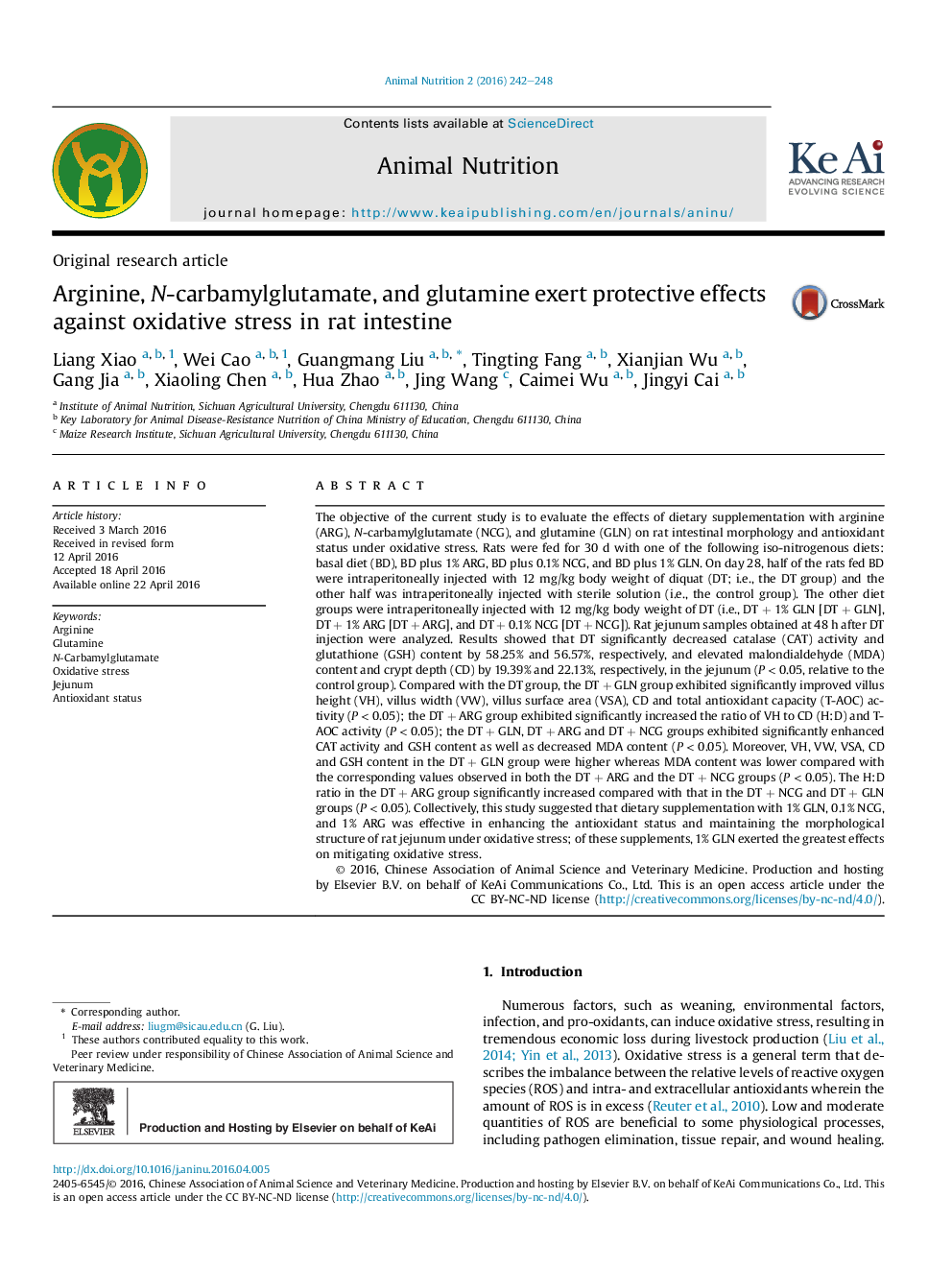| Article ID | Journal | Published Year | Pages | File Type |
|---|---|---|---|---|
| 4522231 | Animal Nutrition | 2016 | 7 Pages |
The objective of the current study is to evaluate the effects of dietary supplementation with arginine (ARG), N-carbamylglutamate (NCG), and glutamine (GLN) on rat intestinal morphology and antioxidant status under oxidative stress. Rats were fed for 30 d with one of the following iso-nitrogenous diets: basal diet (BD), BD plus 1% ARG, BD plus 0.1% NCG, and BD plus 1% GLN. On day 28, half of the rats fed BD were intraperitoneally injected with 12 mg/kg body weight of diquat (DT; i.e., the DT group) and the other half was intraperitoneally injected with sterile solution (i.e., the control group). The other diet groups were intraperitoneally injected with 12 mg/kg body weight of DT (i.e., DT + 1% GLN [DT + GLN], DT + 1% ARG [DT + ARG], and DT + 0.1% NCG [DT + NCG]). Rat jejunum samples obtained at 48 h after DT injection were analyzed. Results showed that DT significantly decreased catalase (CAT) activity and glutathione (GSH) content by 58.25% and 56.57%, respectively, and elevated malondialdehyde (MDA) content and crypt depth (CD) by 19.39% and 22.13%, respectively, in the jejunum (P < 0.05, relative to the control group). Compared with the DT group, the DT + GLN group exhibited significantly improved villus height (VH), villus width (VW), villus surface area (VSA), CD and total antioxidant capacity (T-AOC) activity (P < 0.05); the DT + ARG group exhibited significantly increased the ratio of VH to CD (H:D) and T-AOC activity (P < 0.05); the DT + GLN, DT + ARG and DT + NCG groups exhibited significantly enhanced CAT activity and GSH content as well as decreased MDA content (P < 0.05). Moreover, VH, VW, VSA, CD and GSH content in the DT + GLN group were higher whereas MDA content was lower compared with the corresponding values observed in both the DT + ARG and the DT + NCG groups (P < 0.05). The H:D ratio in the DT + ARG group significantly increased compared with that in the DT + NCG and DT + GLN groups (P < 0.05). Collectively, this study suggested that dietary supplementation with 1% GLN, 0.1% NCG, and 1% ARG was effective in enhancing the antioxidant status and maintaining the morphological structure of rat jejunum under oxidative stress; of these supplements, 1% GLN exerted the greatest effects on mitigating oxidative stress.
